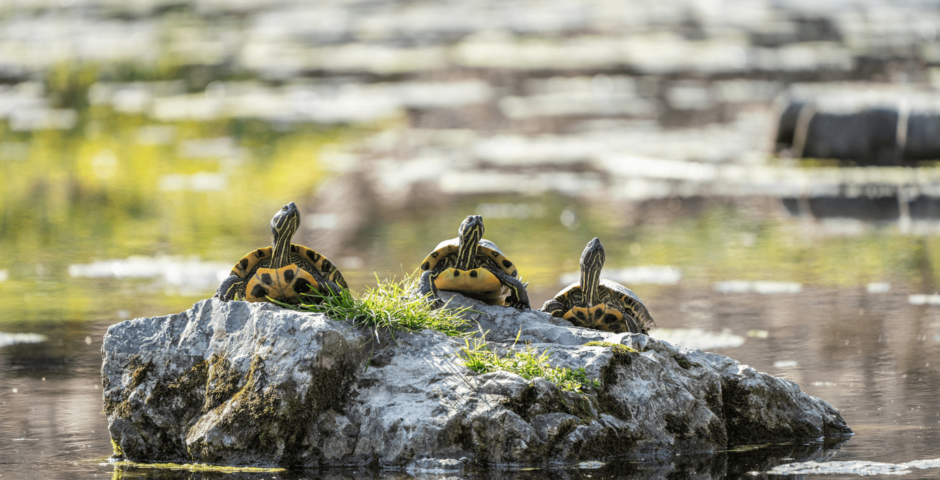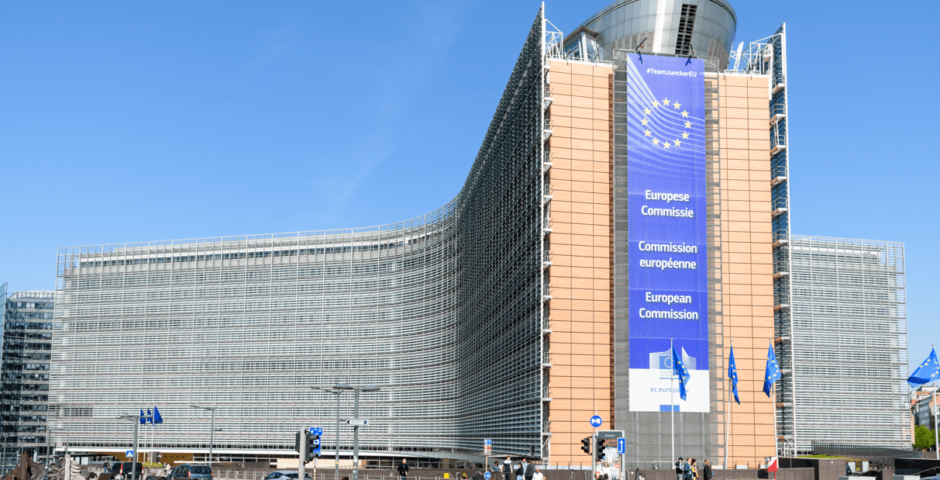How do we protect Europe’s biodiversity?

Why the Union List on invasive alien species is so important.
Intensive luggage searches at customs looking for… fruit? You may have seen it on the TV programme Border Security. The Australian version of this programme follows the country’s customs. They have to deal with all kinds of matters, including drug smuggling or the import of banned substances, as well as the smuggling of banned organisms. You may have noticed how incredibly strict the import rules are on organisms. These strict rules are in place for a reason. They are there to protect Australia’s native flora and fauna, among other things.
In the European Union (EU), and the separate member states, there is also a fairly large number of rules around the import of organisms to protect the environment. However, there is increasing evidence of the presence of plants, animals, or other living organisms that do not naturally occur here, in other words, invasive alien species. This is a major problem, as these organisms pose a great risk to native flora and fauna, but also to health, safety and the economy. The EU has therefore introduced the Union List on invasive alien species; a list containing harmful alien plants and animals that are not allowed to possess and which may not be traded, cultivated, transported and imported. But what exactly are invasive alien species, how do they get here and what is being done to minimise their impact?
When is an organism an (invasive) alien species?
Quite a few criteria apply before an animal, plant or another organism can be characterised as an invasive alien species. When a species that does not occur naturally in a country appears in nature, we call it an alien species. At the EU level, climate change, or other circumstances, may cause a species native to one region to move to another. Only when it can be established that this plant or animal entered the country as a result of human activity, is it called an alien species.
Before an alien can be called an invasive alien, some time passes. This is because an alien species may migrate away from a country by itself. This is the case, for example, when it does not thrive well in the climate it ended up in after all. It is only a small proportion of alien species that manages to establish themselves in the “host country”. These then go on to multiply. This multiplication can be detrimental to native species, either because they take up habitat or because they begin to regard a particular native species as prey. It is these alien species that are eventually called invasive alien species. When an alien species is found to be harmful to the environment, they are placed on the invasive alien species list. These lists exist at the European level in the form of the Union List on invasive alien species, but also on a national level.
The Union List on invasive alien species
In 2014, the first step towards the Union List was taken with Regulation No 1143 “on the prevention and control of the introduction and spread of invasive alien species”. From this regulation, the first Union List of invasive alien species emerged in 2016. The regulation establishes that not every alien species is dangerous to the European environment. These species are therefore not included in the regulation. The alien species that become invasive can have “serious negative impacts on biodiversity and related ecosystems”, according to the regulation.
However, the presence of invasive alien species can also have economic and social consequences. One can think of adverse effects on human health, safety or the economy. That an invasive alien species can be a danger to human health is quite evident, but you might wonder how it is that invasive plants and animals can be a danger to safety or the economy.
An example is one of the most invasive alien species listed by the EU: Japanese knotweed. Large-scale research is currently underway to control this plant, which is badly needed because Japanese knotweed is multiplying rapidly. With its strong rhizomes and stems, the plant can cause serious damage to buildings, pipes and even roads. In addition, the plant grows incredibly fast and is very difficult to control, displacing native plant species. The plant could therefore potentially affect crops if not controlled.
Before an alien species ends up on the Union List, the European Commission performs a risk assessment. This risk assessment consists of eight steps that include identifying a species, mapping its reproduction and distribution patterns, describing how it may have been introduced to the area and assessing the risk of its presence. Finally, it looks at where in the EU the species is already present.
Besides identifying the negative consequences of introducing an alien species, the benefits are also identified. Only if the disadvantages outweigh the advantages will a species be placed on the Union List. In addition to the Commission being able to propose species for the list, member states can also apply to have a species included. The moment they do so, they are responsible for carrying out the risk assessment themselves.
The regulation also sets out the rules applicable to dealing with invasive alien species. Species on the Union List may not intentionally:
- Be introduced into the EU;
- be kept;
- be bred;
- be transported;
- be traded;
- be used or exchanged;
- be allowed to reproduce;
- be released into the environment.
The list covers commercial keepers as well as private individuals who have invasive alien plants or animals in their possession. The Union List is a so-called “dynamic list”. The first Union List appeared in 2016, but we have now reached the third additional Union List, which appeared on 12 July 2022. It is not just that new species are added. Species can also be taken off the list when the rules no longer benefit the policy around that particular species. However, it is hardly ever the case that a species is delisted. The latest addition saw an expansion of 22 new species.
Invasive aliens: the turtle
To get a bit more of an idea of what an invasive alien species actually is, how it spreads, and when a species ends up on the list, I would like to introduce you to one of the most well-known invasive alien species in the region: the turtle.
The turtle has been present on the Union List since 2016. Specifically, we are talking about the Loggerhead turtle, Trachemys scripta. Different subspecies of the Loggerhead turtle appear in the EU. For example, in the Netherlands three subspecies are observed: the Red-eared turtle (Trachemys scripta elegans), the Yellow-eared turtle (Trachemys scripta troostii), and the Yellow-bellied turtle (Trachemys scripta scripta). Before the Union List imposed restrictive measures on the import, breeding and trade of these turtles, these animals were very popular as pets. This is also one of the reasons why the turtle could become an invasive alien here.
A turtle can grow incredibly old. A Red-eared turtle, for example, reaches an average age of 30 to 50 years. Because the creatures can get so old and people might get fed up with them at some point, turtles were regularly dumped in the wild. If we take the Netherlands as an example, we see that the average subspecies of the Loggerhead turtle can easily survive in Dutch nature. The animals burrow themselves in when it gets too cold and can thus hibernate well. They feed on the various species of fish they find in ditches and lakes. They can also reproduce in this climate. You guessed it, because the turtle thrives in the climate and meanwhile eats up on native fish species, the animals become a threat to biodiversity.
And so it happened; the turtle was put on the first Union List. The import of the Loggerhead turtle had already been banned in the European Union since 1998, but since 2016 it has also been banned from sale. However, this does not mean that everyone who had a turtle at that time had to have it euthanised. In fact, the 2014 regulation stipulated that if someone owned an animal at the time it ended up on the Union List, the animal could be kept until it died a natural death. There are also general transitional rules for sellers of animals and plants that apply in the first and second year after a species is placed on the Union List. Sometimes it also happens that this transitional period lasts longer, as is the case, for example, with the popular pond plant Water Lettuce, which landed on the list in July 2022.
The importance of the Union List
Does the ban on the import, breeding and trade of the Loggerhead turtle mean that we do not find turtles anywhere in European nature? Absolutely not. Just look around you at any ditch or lake and you’ll spot one from time to time. Turtles can still be found in large numbers because it is almost impossible to combat the animals. We see this in practice, for instance, with another well-known member of the Union List, the American crayfish. The creatures are found in such large numbers in European waters that containment is almost impossible.
The turtle and the crayfish were already present in the EU before the introduction of the Union List and clearly show how important it is to have a list for invasive alien species and to enforce it properly. The fact that the Union List is constantly being added to, shows that the concerns surrounding the degradation of European biodiversity are well-founded. With the ever-increasing globalisation of the free market, more and more plants and animals are crossing borders, which can cause serious damage to European nature. This is accelerated by climate change, as the European climate is also becoming increasingly attractive for these species to settle permanently.
You might think, watching Border Security, that it is an exaggeration that Australia controls the import of organisms so intensively and also enforces the rules strictly. Yet one seed from a harmless-looking piece of fruit can lead to a chain of misery for biodiversity. An example such as that of Japanese knotweed shows that it would not be so bad if the EU was just a little stricter when it comes to introducing living organisms as well. If we do not do this, biodiversity will be further affected. In addition, the presence of an invasive alien species could actually become a health or safety hazard and, with a pandemic fresh in our minds, we should want to avoid that at all costs.
Esmee Slutter recently graduated from the University of Amsterdam within the Master’s programme in East European Studies. Previously, she obtained bachelors in History (Radboud University) and Russian Studies (Leiden University).
Image: Shutterstock




